Mastering the Art: Step-by-Step Guide on Washing 4C Hair

Caring for 4C hair goes beyond aesthetics—it’s a journey towards promoting overall hair health and embracing the natural beauty of your unique curls.
Proper hair washing is a fundamental aspect of this care routine. For those with 4C hair, which often features tight curls and coils, the right washing techniques can help maintain moisture, minimize breakage, and preserve the intricate curl pattern.
This post contains affiliate links and I may earn a small commission when you click on the link at no additional cost to you. As an Amazon Affiliate, I earn from qualifying purchases, thank you.
In this comprehensive guide, we will walk you through the step-by-step process of how to wash 4C hair for optimal growth and care, offering insights and expert tips to ensure your hair receives the love and attention it deserves. Whether you’re a beginner or looking to improve your current routine, this guide has got you covered.
Pin this image for later!

How To Wash 4C Hair Step By Step Like A Pro
Step 1: Sectioning Strategies for Effective 4C Hair Washing

Before you begin washing your 4C hair, it’s important to section it into manageable parts. This helps ensure that you thoroughly cleanse each section and minimize tangles. Additionally, sectioning your hair facilitates a more targeted application of products, ensuring that each part of the hair receives the necessary attention and care.
Start by dividing your hair into four sections, using hair clips or hair bands to secure them. This will make it easier to access every part of your hair during the washing process.
Step 2: Nourishing Your 4C Hair with a Pre-Poo Routine
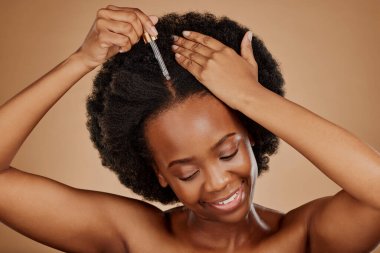
Pre-pooing, short for pre-shampooing, is a valuable practice for individuals with 4C hair, offering numerous benefits in enhancing the overall health and manageability of the hair before the washing process.
Pre-pooing is an essential step in a 4C hair wash routine. It involves applying a protective layer to your hair before shampooing to prevent moisture loss and minimize damage.
Benefits of Pre-Pooing for 4C Hair:
- Moisture Retention: Pre-pooing involves applying a moisturizing treatment to the hair before shampooing. This helps to create a protective barrier, preventing the stripping of natural oils during the washing process and promoting moisture retention in 4C hair.
- Detangling Facilitation: Applying a pre-poo treatment helps to loosen knots and tangles, making the subsequent detangling process much smoother. This is especially crucial for 4C hair, which is prone to tangling.
- Reduced Breakage: By providing an extra layer of protection, pre-pooing minimizes the risk of breakage during washing. This is particularly important for 4C hair, which may be more prone to breakage if not handled gently.
- Improved Manageability: Pre-pooing softens the hair, making it more manageable during the washing and styling processes. This can save time and effort while contributing to a healthier overall hair care routine.
Effective Techniques for Pre-Pooing 4C Hair:
- Oil-Based Treatments: Use natural oils such as coconut oil, olive oil, or avocado oil for pre-pooing. These oils penetrate the hair shaft, providing deep nourishment and moisture. Apply the pre-poo treatment to each section of your hair, focusing on the ends, and leave it on for a few minutes to allow it to penetrate your hair strands.
- Conditioning Masks: Apply a pre-poo conditioning mask rich in hydrating ingredients like aloe vera, honey, or shea butter. This adds an extra layer of moisture to 4C hair (This step is optional).
- Gentle Massage: While applying the pre-poo treatment, incorporate a gentle scalp massage. This stimulates blood flow, promoting a healthier scalp environment for 4C hair.
- Steam Treatment: You can also enhance the benefits of pre-pooing by incorporating a steam treatment. This opens up the hair cuticle, allowing the pre-poo treatment to penetrate more effectively. You can use a face steamer or simply cover your hair with a steam cap for about 45 minutes for this process.
Step 3: Gentle Detangling Techniques for 4C Hair Care

Gentle detangling is a crucial step in the hair care routine for individuals with 4C hair, as it helps minimize breakage and promotes a smoother washing process. With your hair still coated in the pre-poo treatment, gently finger-detangle or use a wide-tooth comb to remove any knots. Be patient and take your time to avoid causing breakage or damage to your hair.
Here, we’ll delve into effective and gentle detangling methods tailored specifically for the unique needs of 4C hair.
Why Gentle Detangling Matters for 4C Hair:
- Reduced Breakage: 4C hair is characterized by tight curls and coils, making it more prone to tangling. Gentle detangling minimizes breakage by carefully unraveling knots without causing stress to the hair shaft.
- Preservation of Curl Pattern: Harsh detangling methods can disrupt the natural curl pattern of 4C hair. By employing gentle techniques, individuals can maintain the integrity of their curls, promoting a more defined and cohesive appearance.
- Less Strain on Hair Strands: 4C hair is delicate, and excessive force during detangling can lead to undue stress on the hair strands. Gentle detangling preserves the structural integrity of the hair, preventing unnecessary damage.
Effective and Gentle Detangling Methods for 4C Hair:
- Finger Detangling: Use your fingers to gently work through knots and tangles. This method allows for better control and sensitivity to the hair’s natural texture, minimizing the risk of breakage.
- Wide-Tooth Comb: Choose a wide-tooth comb with smooth, rounded edges to gently detangle 4C hair. Begin detangling from the tips and work your way up to the roots, addressing tangles gradually.
- Detangling Sprays or Conditioners: Apply a detangling spray or conditioner to provide slip and ease the detangling process. This reduces friction and helps the detangling tool glide through the hair with less resistance.
- Divide and Conquer: Section your 4C hair into manageable portions before detangling. This approach makes the process more systematic, ensuring that each section receives proper attention without overwhelming the entire head of hair.
- Detangle During Conditioning: Detangling is often more effective when done in conjunction with conditioning. Apply a generous amount of conditioner, and detangle the hair using your fingers or a wide-tooth comb while the conditioner is present.
By exploring and incorporating these gentle detangling methods, individuals with 4C hair can minimize breakage, preserve their natural curl pattern, and make the washing process a smoother and more enjoyable experience. Taking the time to detangle with care contributes to the overall health and beauty of 4C hair.
Step 4: Time To Shampoo Your Hair
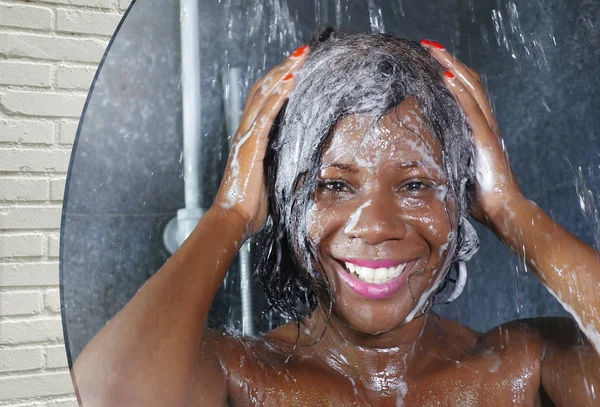
Now it’s time to cleanse your hair with a shampoo specifically formulated for 4C hair. When shampooing, focus on your scalp rather than the length of your hair, as the purpose is to remove product buildup and excess oil.
Massage the shampoo into your scalp using your fingertips, paying attention to any problem areas or areas prone to oiliness. Rinse out the shampoo thoroughly, ensuring that no product residue remains.
Choosing the Right Shampoo for Your 4C Hair
Understanding the importance of selecting the right shampoo formulated for the specific needs of 4C hair is essential for maintaining its health, moisture balance, and overall vitality. Here, we’ll explore the key considerations and benefits associated with choosing the appropriate shampoo for 4C hair.
Why Shampoo Selection Matters for 4C Hair:
- Gentle Cleansing: 4C hair tends to be more delicate and prone to dryness compared to other hair types. A suitable shampoo for 4C hair should provide effective cleansing without stripping the hair of its natural oils, ensuring a gentle yet thorough wash.
- Moisture Retention: Proper moisture balance is critical for 4C hair, as it can be more susceptible to dryness. The right shampoo should contain moisturizing ingredients to help retain the hair’s natural moisture, preventing excessive dryness and breakage.
- Sulfate-Free Formulas: Sulfates, commonly found in many commercial shampoos, can be harsh and may strip natural oils from 4C hair, leading to increased dryness. Opting for sulfate-free shampoos helps maintain the hair’s natural moisture and minimizes the risk of damage.
- Hydration and Nourishment: Look for shampoos that include hydrating and nourishing ingredients such as aloe vera, shea butter, or coconut oil. These components contribute to the overall health of 4C hair by providing essential nutrients and hydration.
- pH-Balanced Formulas: 4C hair thrives in a slightly acidic environment. Choosing a pH-balanced shampoo helps maintain the natural pH level of the hair and scalp, promoting a healthier and more vibrant mane.
Tips for Selecting the Right Shampoo for 4C Hair:
- Read Labels Carefully: Look for shampoos specifically formulated for dry or curly hair. Avoid products with harsh chemicals or excessive drying agents.
- Moisturizing and Hydrating Ingredients: Prioritize shampoos that contain ingredients like glycerin, aloe vera, or natural oils known for their moisturizing properties.
- Sulfate-Free Options: Choose sulfate-free shampoos to prevent stripping the hair of its natural oils and to minimize the risk of dryness and breakage.
- pH-Balanced Products: Check for shampoos labeled as pH-balanced to ensure they are in harmony with the natural pH of 4C hair.
- Consider Your Hair’s Unique Needs: 4C hair can vary in thickness and porosity. Consider your hair’s unique characteristics when selecting a shampoo to address its specific needs.
Step 5: Deep Conditioning: A Crucial Step for 4C Hair Health
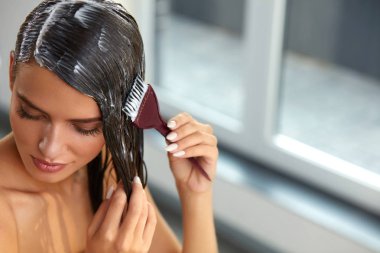
Deep conditioning is a vital step in any 4C hair wash routine. It replenishes moisture, strengthens the hair, and improves manageability.
After shampooing, apply a generous amount of deep conditioner to each section of your hair, focusing on the ends. Use your fingers or a wide-tooth comb to distribute the conditioner evenly.
Leave the deep conditioner on for the recommended time, allowing it to deeply penetrate your hair strands.
The Importance of Deep Conditioning for 4C Hair:
- Hydration Boost: 4C hair tends to have a tighter curl pattern, making it more challenging for natural oils to travel from the scalp to the ends. Deep conditioning infuses the hair with moisture, helping to combat dryness and enhance overall hydration.
- Minimizing Breakage: Deep conditioning treatments work to strengthen the hair shaft, reducing the risk of breakage. This is particularly important for 4C hair, which may be more susceptible to breakage due to its coiled structure.
- Enhancing Elasticity: 4C hair often has less natural elasticity compared to other hair types. Deep conditioning helps improve elasticity, making the hair more resilient and less prone to damage during styling and manipulation.
- Softening and Detangling: The rich, nourishing ingredients in deep conditioners help to soften the hair, making it easier to detangle. This is especially beneficial for 4C hair, which can experience significant tangling.
- Improving Manageability: Deep conditioning contributes to improved manageability by smoothing the hair cuticle, reducing frizz, and facilitating easier styling. This makes the overall hair care routine more efficient and enjoyable.
Best Deep Conditioning Practices for 4C Hair:
- Regular Treatments: Incorporate deep conditioning into your routine regularly, depending on the needs of your hair. This could range from weekly to bi-weekly treatments, depending on factors such as moisture levels, styling practices, and environmental conditions.
- Focus on Ends: Concentrate the deep conditioning product on the ends of your 4C hair, as this area is more prone to dryness and damage. Ensure that the product is evenly distributed for comprehensive coverage.
- DIY Options: Explore do-it-yourself deep conditioning options using natural ingredients such as honey, avocado, or yogurt. These ingredients can provide an extra boost of nutrients tailored to the specific needs of 4C hair.
- Consistency is Key: Deep conditioning yields optimal results with consistent use over time. Make it a habit to prioritize deep conditioning treatments to maintain the health and vitality of your 4C hair.
Step 6: Add Steam For Deep Hydration Boost
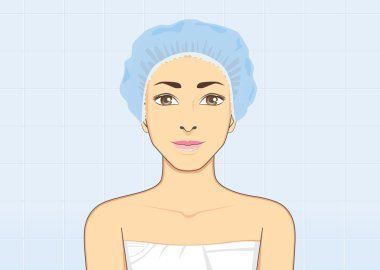
To enhance the effectiveness of your deep conditioner, consider incorporating steam into your wash routine. Steam opens up the hair cuticles, allowing the deep conditioner to penetrate more deeply and provide maximum hydration.
You can use a hooded steamer, or a handheld steamer, or create a DIY steam treatment by covering your hair with a shower cap and wrapping a warm towel around your head. Leave the steam on for 15-30 minutes, then rinse out the deep conditioner.
Benefits of Steam for 4C Hair:
- Deep Moisture Penetration: The tightly coiled structure of 4C hair can make it challenging for moisture to penetrate deeply. Steam opens up the hair cuticle, allowing moisturizing agents to reach the innermost layers of the hair shaft. This deep penetration is particularly beneficial for combatting dryness.
- Enhanced Product Absorption: Steam treatments significantly improve the absorption of hair care products, including conditioners and deep treatments. This heightened absorption ensures that the hair receives maximum benefit from nourishing ingredients, promoting improved elasticity and strength.
- Curl Definition and Softness: Steam helps to define the natural curl pattern of 4C hair, contributing to enhanced curl definition. Additionally, the moisture infusion imparts a soft and supple texture, reducing brittleness and making the hair more manageable.
- Reduced Breakage and Damage: The moisturizing effects of steam contribute to increased hair flexibility, reducing the risk of breakage during styling and detangling. This is particularly crucial for 4C hair, which may be more prone to breakage due to its coiled structure.
- Soothing and Calming for the Scalp: Steam treatments can have a soothing effect on the scalp, helping to alleviate dryness, itchiness, and irritation. A healthy scalp environment is essential for promoting overall hair health.
What To Do After Washing Your 4C Hair
Step 7: Post-Wash Detangle: Tips and Techniques

After rinsing out the deep conditioner, it’s time to detangle your 4C hair. Wet hair is more pliable and easier to detangle, so work through each section of your hair with your fingers, a wide-tooth comb, or a detangling brush.
Or you can apply a leave-in conditioner to damp hair using the ‘praying hands’ method. This method involves smoothing the product between your palms and gliding them down each section of hair to encourage the strands to separate. This adds an extra layer of moisture, making it easier to detangle and style your 4C hair.
Start from the ends and work your way up to the roots, being gentle to avoid causing breakage. Detangling your hair while it’s wet helps to minimize tangles and knots.
Step 8: Embrace T-Shirt Drying For 4C Hair

Instead of using a regular towel, opt for a t-shirt or a microfiber towel to dry your 4C hair. Regular towels can cause friction and damage to your hair, leading to breakage and frizz.
Unlike traditional towels, t-shirts offer a smoother surface that minimizes friction and reduces the risk of breakage and frizz, making them an ideal choice for drying the unique texture of 4C hair.
Gently squeeze out excess water from your hair using the t-shirt, being careful not to rub or twist your hair. This method helps to retain moisture and minimize shrinkage.
The Benefits of T-Shirt Drying for 4C Hair:
- Reduced Friction: The smooth surface of a t-shirt creates less friction compared to regular towels. This is particularly important for 4C hair, which is prone to frizz and breakage. T-shirt drying helps maintain the hair’s natural texture and curl pattern.
- Minimized Breakage: Traditional towels can cause hair breakage and damage due to their rough texture. T-shirts are gentler on 4C hair, reducing the risk of breakage and promoting overall hair health.
- Enhanced Curl Definition: The soft and absorbent nature of t-shirts helps retain moisture without disrupting the curl pattern of 4C hair. This contributes to enhanced curl definition and a more visually appealing hairstyle.
- Retained Moisture: T-shirts are less absorbent than towels, which means they won’t strip as much moisture from the hair. This is advantageous for 4C hair, which requires optimal moisture retention to stay hydrated and healthy.
- Improved Manageability: T-shirt drying leaves 4C hair in a smoother and more manageable state. The reduced friction prevents tangles and knots, making it easier to detangle and style the hair post-drying.
T-Shirt Drying Techniques for 4C Hair:
- Blotting, Not Rubbing: Instead of rubbing or vigorously towel-drying, gently blot your 4C hair with a t-shirt. This helps to absorb excess water without causing friction or damage to the hair strands.
- Section Your Hair: If you have long or thick 4C hair, consider sectioning it before drying. This ensures that each section receives a thorough and gentle drying treatment.
- Plopping Method: For those with longer 4C hair, the plopping method involves wrapping the hair in a t-shirt to encourage curl definition and reduce frizz. This technique is especially popular for achieving well-defined curls.
- Microfiber or Cotton T-Shirts: Choose a t-shirt made from microfiber or cotton, as these materials are gentle on 4C hair and help maintain its natural moisture balance.
- Consistent Practice: Make t-shirt drying a consistent part of your hair care routine. Whether you wash your hair weekly or bi-weekly, using a t-shirt for drying consistently contributes to long-term hair health.
Step 9: Apply Moisture Using the L.O.C. Method

To keep your 4C hair moisturized and hydrated after washing, employ the L.O.C. (Liquid, Oil, Cream) method.
Start by applying a leave-in conditioner to damp hair to provide a base layer of moisture. Follow up with a natural oil, such as coconut oil or jojoba oil, to seal in the moisture and nourish your hair.
Finally, apply a creamy moisturizer or butter to further lock in the moisture and provide additional hydration.
Step 10: Protect Your Ends With Protective Hairstyles for 4C Hair
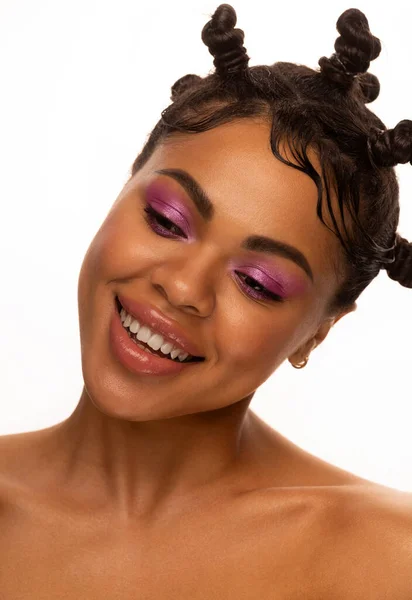
After completing your wash routine, it’s important to protect your hair by putting it in a protective style. This helps to minimize manipulation, reduce breakage, retain moisture, and retain length. Twists, braids, or buns are popular protective styles for 4C hair.
Choose a style that suits your preference and tuck away your hair ends securely. Remember to use gentle hair accessories and avoid styles that put excessive tension on your hair.
Step 11: Protect Your Hair At Night
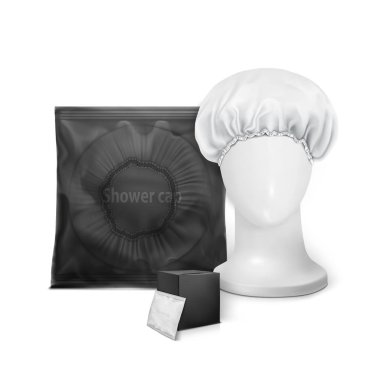
Maintaining 4C hair overnight requires special care to preserve styles, prevent breakage, and retain moisture. Incorporating a nighttime routine with the use of satin or silk materials for bedding can contribute significantly to the health and longevity of your 4C hair.
Satin or Silk Materials for Bedding:
- Satin or Silk Pillowcases:
- Invest in satin or silk pillowcases to minimize friction and reduce breakage. These materials are gentler on 4C hair compared to cotton.
- Satin or Silk Bonnets:
- Wear a satin or silk bonnet to protect your hair from rubbing against the pillowcase. This helps maintain moisture and prevents tangling.
- Satin or Silk Scarves:
- Alternatively, tie a satin or silk scarf around your head, especially if you have a specific style you’d like to preserve overnight.
Common Challenges You May Face When Washing 4C Hair
Washing 4C hair comes with its unique set of challenges, including shrinkage, tangles, and moisture retention. However, with the right techniques and products, individuals can overcome these challenges and ensure a smooth and effective washing process. In this section, we’ll discuss common challenges faced by individuals with 4C hair during washing and provide practical solutions:
1. Shrinkage:
Challenge: 4C hair is known for its significant shrinkage, making it appear shorter than its actual length when wet.
Solution:
- Stretching Techniques: Before washing, stretch your hair using methods like braiding, banding, or twisting. This helps minimize shrinkage during the washing process.
- Sectioning: Wash your hair in sections to manage and stretch each part individually. This makes the detangling process easier and reduces overall shrinkage.
2. Tangles and Knots:
Challenge: 4C hair is prone to tangling due to its tight curl pattern and natural coil structure.
Solution:
- Pre-Detangling: Before washing, pre-detangle your hair using a wide-tooth comb or your fingers. This reduces the chances of severe tangling during the washing process.
- Use Detangling Products: Apply a detangling conditioner or use a pre-poo treatment to add slip and make the detangling process smoother.
- Sectioning: Divide your hair into manageable sections during washing to prevent tangling and make it easier to work through knots.
3. Dryness and Moisture Retention:
Challenge: 4C hair can be prone to dryness, and moisture retention can be a challenge during and after the washing process.
Solution:
- Pre-Pooing: Incorporate a pre-poo treatment using natural oils or deep conditioning products to add moisture before washing.
- Use Moisturizing Shampoos and Conditioners: Choose shampoos and conditioners specifically formulated for dry or curly hair to maintain moisture levels.
- Leave-In Conditioning: Apply a leave-in conditioner post-wash to keep your hair hydrated and promote moisture retention.
4. Fragility and Breakage:
Challenge: 4C hair can be delicate and prone to breakage, especially when wet.
Solution:
- Gentle Detangling: Detangle your hair with care, starting from the tips and working your way up. Use your fingers or a wide-tooth comb to minimize breakage.
- Avoid Harsh Towel Drying: Instead of rubbing your hair with a towel, use a soft T-shirt or a microfiber towel to blot excess water and reduce friction.
- Protective Styling: Consider protective styles that minimize manipulation and reduce the risk of breakage, especially when dealing with wet hair.
5. Product Buildup:
Challenge: Product buildup can occur if not properly cleansed during the washing process, leading to dull and weighed-down hair.
Solution:
- Clarifying Shampoo: Incorporate a clarifying shampoo into your routine occasionally to remove product buildup and maintain a clean scalp.
- Dilute Products: Dilute your shampoos and conditioners with water to ensure thorough cleansing without excessive product residue.
6. Scalp Issues:
Challenge: 4C hair may be prone to scalp issues, such as dryness or flakiness.
Solution:
- Scalp Massage: During the washing process, gently massage your scalp to stimulate blood flow and promote a healthier scalp environment.
- Use Moisturizing Shampoos: Opt for shampoos with moisturizing properties to address dryness without stripping the scalp of natural oils.
By implementing these practical solutions, individuals with 4C hair can overcome common challenges encountered during the washing process. Tailoring these techniques to your specific hair needs and preferences ensures a positive and effective washing experience for healthier, more vibrant 4C hair.
Related Post >>> How Often Should You Wash 4C Hair?
Alternative Cleansing Methods For 4C Hair
Traditional shampooing may not always be the go-to for cleansing 4C hair, and there are alternative methods that you can use in place of your traditional shampoo to wash your 4C hair such as co-washing and the use of clay masks or apple cider vinegar (ACV) rinses.
These alternative cleansing methods for 4C hair can also keep your scalp clean until you’re ready to use shampoo.
Embracing Patience: A Key to Healthy 4C Hair Care
The journey to maintaining and styling 4C hair is a unique and beautiful process that demands a crucial ingredient: patience.
From detangling to styling, every step requires careful attention and time investment. Emphasizing the importance of patience is not just a piece of advice; it’s a fundamental principle that can significantly minimize damage and breakage, allowing your 4C hair to flourish.
Here’s why patience is the key to a healthy hair care routine:
1. Detangling
Why Patience Matters:
- 4C hair has a tighter curl pattern, making it prone to tangling and knotting.
- Rushing through detangling can lead to breakage, split ends, and unnecessary stress on the hair.
Encouragement:
- Take your time to detangle gently, starting from the tips and working your way up.
- Use your fingers or a wide-tooth comb, and if needed, apply a detangling product for added slip.
- Patience in detangling helps preserve the hair’s integrity and reduces the risk of damage.
2. Washing and Conditioning
Why Patience Matters:
- Rushing through the washing process may result in improper cleansing and moisture retention.
- Quick applications of products may not provide thorough coverage, leading to uneven results.
Encouragement:
- Section your hair for a more systematic and effective washing routine.
- Take the time to apply cleansing and conditioning products evenly, ensuring each strand receives proper care.
- Allow deep conditioners to sit for the recommended time to maximize their benefits.
3. Styling
Why Patience Matters:
- Complex styles and intricate braids or twists demand time and precision.
- Hastily manipulating the hair into styles may cause breakage and affect the overall outcome.
Encouragement:
- Plan your styling sessions with adequate time, especially for intricate styles.
- Work in smaller sections to maintain control and ensure even styling.
- Embrace the process, enjoying the transformation of your hair with each carefully crafted style.
4. Drying
Why Patience Matters:
- Rushing the drying process, especially with heat, can lead to damage and increased vulnerability.
- Air drying takes time, and impatience may result in frizz or uneven drying.
Encouragement:
- Choose gentle drying methods, like air-drying or using a low heat setting.
- Allow your hair the time it needs to dry naturally or under controlled conditions.
- Be patient with protective styles, ensuring they are fully dry before unraveling to prevent breakage.
5. Overall Hair Care
Why Patience Matters:
- Healthy hair growth and maintenance require consistent care over time.
- Rushed routines may lead to neglect, hindering the long-term health of 4C hair.
Encouragement:
- Establish a consistent hair care routine and stick to it patiently.
- Celebrate the small victories along your hair journey, recognizing that growth and improvement take time.
- Trust the process, acknowledging that patience is a powerful ally in achieving and maintaining healthy 4C hair.
In the world of 4C hair care, patience is not just a virtue; it’s a guiding principle that nurtures the health and beauty of your hair. Embrace the process, savor each step, and allow the time your hair needs to thrive. Remember, in the world of hair care, patience is not a delay but a purposeful investment in the long-term well-being of your beautiful 4C curls.
FAQ
Should You Wash Your 4C Hair With Cold Water?
Washing 4C hair with cold water can be beneficial as it helps to seal the hair cuticle, enhance shine, minimize breakage, preserve moisture, and encourage a healthier scalp environment. Adjusting the water temperature to cold during rinsing can contribute to the overall well-being of 4C hair by supporting its natural texture and health.
While hot water can strip the hair of natural oils and lead to dryness, opting for cold water offers a range of benefits that contribute to the overall well-being of your 4C hair.
Benefits of Washing 4C Hair with Cold Water
1. Sealing the Cuticle
Benefit:
- Cold water helps to seal the hair cuticle, which is the outermost layer of the hair shaft.
Why it Matters:
- A sealed cuticle promotes smoother, shinier hair and reduces frizz.
- Sealing the cuticle also helps to lock in moisture, preventing the hair from becoming overly dry.
2. Enhancing Shine
Benefit:
- Cold water contributes to increased hair shine.
Why it Matters:
- The closed cuticle reflects more light, giving the hair a glossy appearance.
- Enhanced shine adds to the overall visual appeal of 4C hair.
3. Minimizing Breakage
Benefit:
- Cold water helps to strengthen the hair shaft, reducing the risk of breakage.
Why it Matters:
- Strengthened hair is more resistant to damage and breakage, contributing to overall hair health.
- Particularly beneficial for 4C hair, which can be more prone to breakage.
4. Preserving Moisture
Benefit:
- Cold water helps to maintain the hair’s natural moisture balance.
Why it Matters:
- Cold water does not strip the hair of its natural oils as much as hot water does.
- Preserving moisture is crucial for preventing dryness and promoting elasticity.
5. Encouraging Hair Growth
Benefit:
- Cold water can stimulate blood circulation in the scalp.
Why it Matters:
- Improved blood flow promotes a healthier scalp environment.
- A healthy scalp is conducive to optimal hair growth.
Tips for Washing 4C Hair with Cold Water:
- Rinse with Cold Water: After applying your chosen cleansing or conditioning products, rinse your hair with cold water to seal in the benefits.
- Gradual Temperature Change: If you find it challenging to wash your hair entirely with cold water, consider gradually lowering the temperature during the rinsing stage.
- Final Rinse: Make the last rinse of your hair care routine a cold one to ensure the cuticle is sealed before styling.
- Experiment Based on Sensitivity: Be mindful of your hair’s sensitivity to cold water, especially during colder seasons, and adjust accordingly.
Conclusion
The journey of washing and caring for 4C hair is a unique and enriching experience that demands patience, attention, and tailored care. Whether your hair is adorned with protective styles, recovering from braids, or styled in a chic shortcut, the key lies in understanding and embracing the specific needs of your 4C curls.
By following the comprehensive steps outlined in this guide, you empower yourself to create a personalized hair care routine that nurtures and celebrates the natural beauty of your hair.
Remember, every wash is an opportunity to show love to your curls, to enhance their health, and to embark on a journey of self-expression and confidence. So, take the time, be patient, and relish the joy of caring for your unique and beautiful 4C hair.
